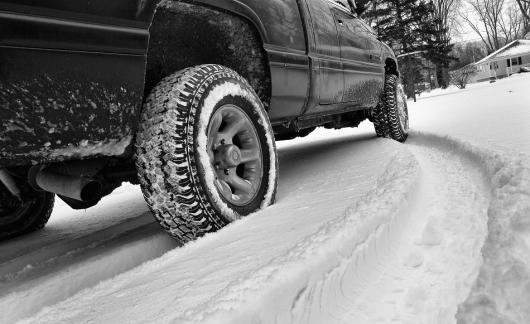From November 11 to effect changes in the technical regulations of wheeled vehicles
Technical regulations of the Customs Union from November 11 will be changed

November 11 will come into force changes to the technical regulations of the Customs Union “On safety of vehicles.” Document number 29 adopted on 16 February this year. According to the agreements between members of the Eurasian economic Commission shall enter into force after 180 days from the date of official publication, so – 11 November (11.11.2018). You need to remember motorists of Russia, Armenia, Belarus, Kazakhstan and Kyrgyzstan by the decision of the Board Eurasian economic Commission of the changes? In fact, not so much.
Changes in the technical regulations of the Customs Union “On safety of wheeled vehicles”, for the average motorist raised a basic question regarding the installation of tyres in winter and summer periods, more precisely, changes the order of decisions of local authorities about the change of tyres during the transition to winter period, including the conditions of use of car tires on vehicles.
On some cars, and when on 11 November 2018 winter tyres will be mandatory?
1. So, from December through February, vehicle category M1 (motor vehicles used for the carriage of passengers and having, besides a place of the driver, not more than 8 seats, i.e. passenger cars) and N1 (vehicles used for the carriage of goods, having a technically permissible maximum mass not exceeding 3.5 tonnes) are required to be equipped with winter tyres. Winter tires are mounted on all wheels of these vehicles.
Without winter tires, the operation of the vehicle, naturally prohibited. For the operation
It is important to note that member countries of the Eurasian economic Union has the right to extend the period of compulsory use of winter tyres, in accordance with their climatic and geographical conditions.
2. Thus, in the technical regulations of the Customs Union was specified which category of cars must now be operated in the winter period, only in winter tyres – that is, cars and trucks weighing up to 3.5 tons.
Accordingly, because other types of vehicles – trucks weighing more than 3.5 tonnes, buses and so forth, not mentioned in the document, so they rule “pereobuvku” do not apply.
3. On November 11, will be added to another prohibition in part 5 “Requirements for tyres and wheels”:
5.7.4. Installation on one axle of the vehicle tires of different dimensions, designs (radial, diagonal, chamber, tubeless), with different speed symbols, load capacity indices, tread patterns, winter and nazemnyh, new and restored, new and with profound drawing of a protector.
Note:
The requirements of 5.7.4 do not apply in the case of a temporary installation on a vehicle spare tire.
Added to these are the tyres different models that will be prohibited to install on the car.
Readers will surely wonder what the penalty stipulated for the operation of a vehicle not on winter tires in the winter in Russia? Actually in fact no, if you take a specific sanction for the lack of winter tires. The project is only on paper. The penalty for this is likely to be set in the amount of 2 thousand rubles.
However, according to part 1 of article 12.5 of the “vehicle Control in the presence of malfunctions or conditions at which operation of vehicles is forbidden…” the sanction for worn out winter tires or summer tires in the winter to make 500 roubles or a warning. “Pereobuvaniya” car on time and don’t skimp on tyres – they are the most important element of security.

In addition to the use of winter tires is made to a number of other changes, for example:
expanding the list of products which are not subject to TR CU 018/2017;
amendment of paragraph 39, under which approval of a type vehicle issued on the base vehicle, can be used as proof of compliance for all funds released in the period of validity of these documents;
clarified requirements for vehicles intended for the carriage of persons with reduced mobility and a number of other less important changes. They can be found here: On amendments to the technical regulation of the Customs Union “About safety of wheel vehicles” (TR TS 018/2011)
